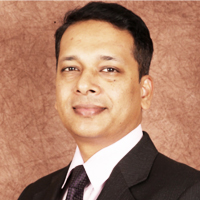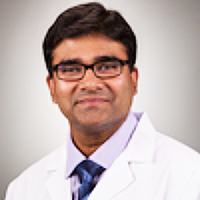Biodegradation of gold and platinum implants in rats studied by electron microscopy
Published on: 27th November, 2019
OCLC Number/Unique Identifier: 8452128684
Graphical abstract
Biodegradation of implanted gold in human tissue. TEM images reveal markedly biodegradation of implanted gold and re-crystallization of dissolved gold as nanoparticle of different size, shape and crystallinity. Highly crystalline icosahedral Au nanoparticle and the corresponding power spectrum are shown on top.
Background: Despite the importance of biodegradation for the durability of metal prosthesis and the widely use of gold implants, there exist a lack of knowledge regarding the stability of pure gold in tissue.
Methods: We studied biodegradation of grids of pure gold, nickel, and copper as well as middle ear prosthesis of gold, platinum or titanium. Metals were implanted into rat skin and humans. Dissolution and re-crystallization process of the metals was analysed using SEM, TEM, power spectra as well as elemental analysis by EDX and EELS/ESI.
Results: Biodegradation of gold was detected, presumably by solving and re-precipitation of gold around implants. Gold cluster, nanoparticles, and mesostructures were detected, formed by dissolution and re-crystallization process. This process results into a migration of gold into the farer off tissue. Cellular filaments as biomolecular templates facilitate the formation of mesostructures. Loss of function of middle ear prosthesis by biodegradation is caused by chronic inflammation and fibrosis. Indeed, similar processes were detected with platinum, but in a very lower level.
Conclusion: Noble metal implants undergo biodegradation in oxidative environment in tissue. The dissolution – recrystallization process can be explained by enzyme catalysed redox processes comprising reactive oxygen species and reduction agents as ascorbic acid present in cells and body tissue. Enymes like myeloperoxidase inside lysosomes of inflammatory cells produce hypochloride ions and H2O2 which can dissolve the gold.
General significance: The crucial role of the specific chemical environments of gold implants in tissue for their chemical stability and durability of function has been demonstrated. Due to widely use and importance of gold implants, this finding is of general interes.
Quantification of minor, trace and toxic elements in stems of Santalum album (L.), Mangiferra indica (L.) and Tinospora cordifolia by instrumental neutron activation analysis
Published on: 4th March, 2022
OCLC Number/Unique Identifier: 9437625422
Stems of Santalum album (Sandalwood), Mangiferra indica (Mango wood), and Tinospora cordifolia (Giloy) are widely used in the preparation of herbal medicines and formulations in the traditional Indian health care system called Ayurveda. These were analyzed for 4 minor (K, Ca, Cl, Mg) and 13 traces (As, Ce, Co, Cr, Cu, Fe, Hg, La, Mn, Na, Se, V, and Zn) including toxic elements by instrumental neutron activation analysis (INAA). Samples in powder form along with reference materials (NIST SRM 1547 and INCT MPH-2) as comparators were irradiated for 1 min/6 h in Dhruva/CIRUS reactors at BARC, Mumbai. Gamma activity was measured by high-resolution gamma-ray spectrometry. In general, K, Ca, Fe, Mn, and Zn contents are very high in all the samples but Santalum album, widely used as a perfume, is more enriched in K, Ca, Cr, Zn, and Se. The concentration of Ca is always high as a major constituent (> 10 mg/g) in all the stem/bark of plant species. A strong inverse correlation (R2 = 0.9999) was observed between Fe and Zn in all three samples and that may be useful in drug manufacturing.
Optimizing Milk Safety: Applying Nuclear Techniques in X-ray Fluorescence Spectroscopy for Heavy Metal Quantification in Powdered Milk Consumed in Senegal
Published on: 9th February, 2024
This study conducted an elemental analysis and assessed heavy metal concentrations in five powdered milk samples (V1, L1, H1, G1, and D1) from Senegal, utilizing X-ray Fluorescence (XRF). The analysis focused on aluminum (Al), calcium (Ca), potassium (K), phosphorus (P), and chlorine (Cl). Aluminum was either undetected or found at negligible levels in all samples. Calcium levels consistently surpassed the Acceptable Maximum Level (AML) in all samples, with H1 exceeding the AML by approximately 11.1 times (27,745.06 ± 310.16 ppm). Potassium concentrations varied, with G1 exhibiting the highest levels, significantly exceeding the AML (51,058.15 ± 456.13 ppm), while V1 remained within acceptable limits. Chlorine concentrations generally complied with the AML, except for G1, which slightly exceeded the limit (3631.04 ± 31.23 ppm). Phosphorus concentrations in H1 were notably higher than the AML (13,750.94 ± 275.35 ppm). The non-uniformity in heavy metal concentrations among samples emphasizes the need for ongoing research and regulatory scrutiny to address potential risks and ensure the safety of powdered milk.
















